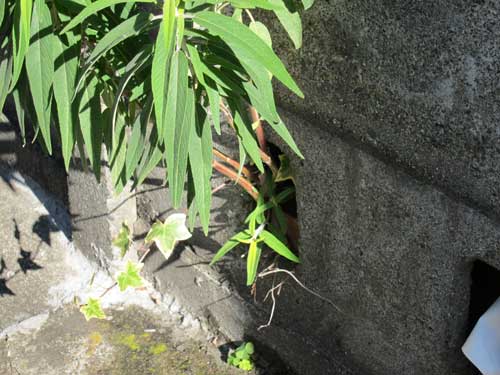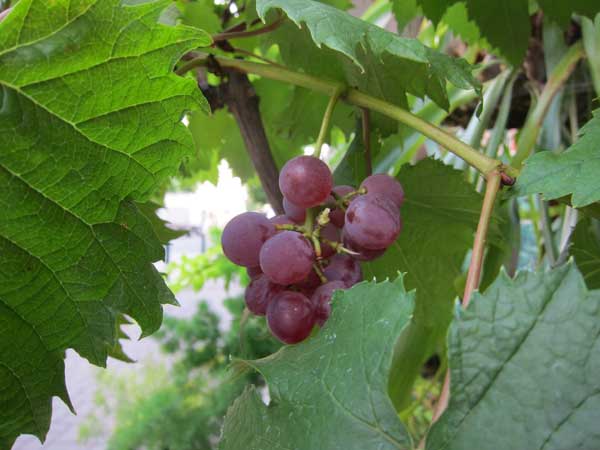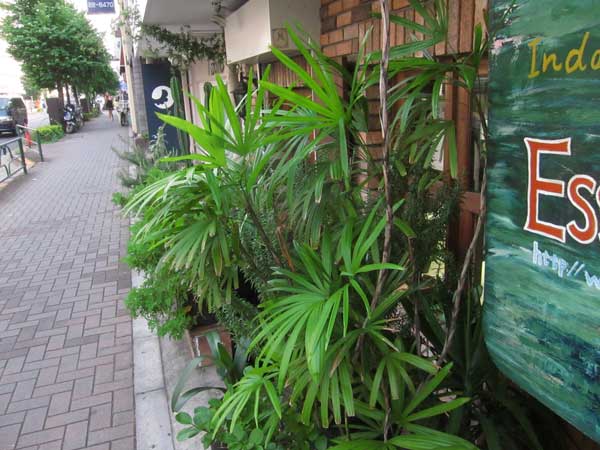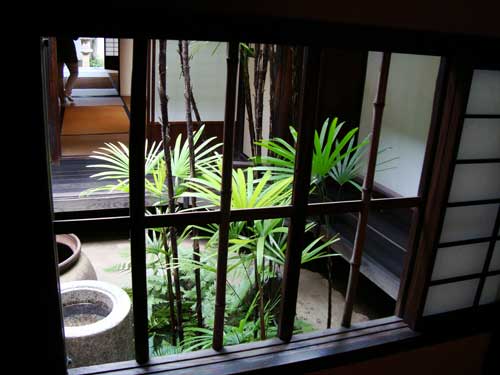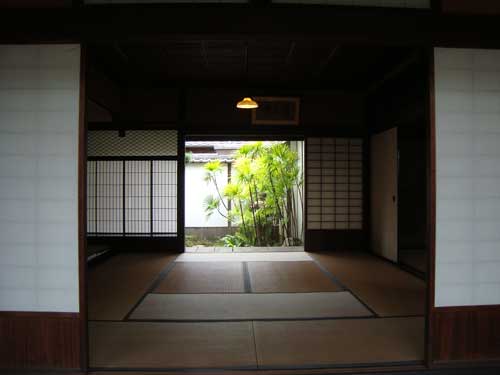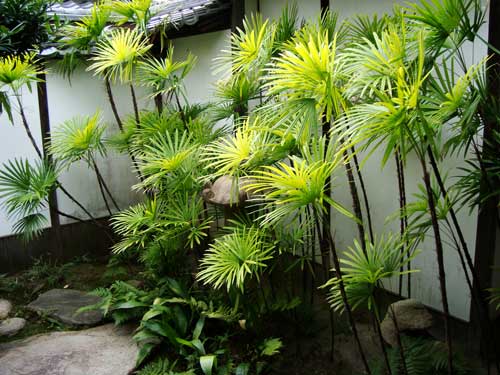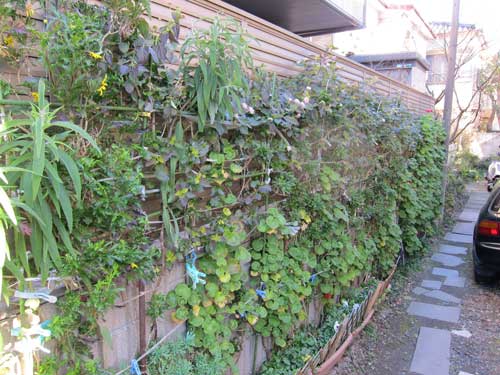
Old Tokyo neighborhoods like Zoushigaya are full of plant lovers who manage to create gardens where there is almost no space. This type of passion for gardening cannot be replicated by large scale developers. What is amazing is the ingenuity and sheer variety of plants grown by residents.
Above there are five or more plants growing vertically along a narrow path that would otherwise be a grim cinder block and metal siding wall between properties. The gardener seems to have used large blue laundry clips to espalier these hardy plants.
 To the left you can see how a corner garden softens the edge of the street and marks the change of seasons. Just as the house reveals that the structure has been added to over time, you can see a mix of mature plants, including raphis palms, with recently bought annuals. Again, all sorts of readily at hand materials are recycled into the garden, including astroturf, cinder blocks, and the red folding chair.
To the left you can see how a corner garden softens the edge of the street and marks the change of seasons. Just as the house reveals that the structure has been added to over time, you can see a mix of mature plants, including raphis palms, with recently bought annuals. Again, all sorts of readily at hand materials are recycled into the garden, including astroturf, cinder blocks, and the red folding chair.
While I like the chaos of this garden, the one below shows how you can have a no flower, more traditional looking Japanese garden growing in the intermediate space between residence and street. The trees look mature and regularly trimmed.
The last images show the beauty of a single plant that has found its way through one of a series of regularly placed holes in a cement wall. I think it’s very pleasing to see a hardy plant bringing life to a hard surface. I wonder if this effect of private public space blurring was intentional or accidental?

